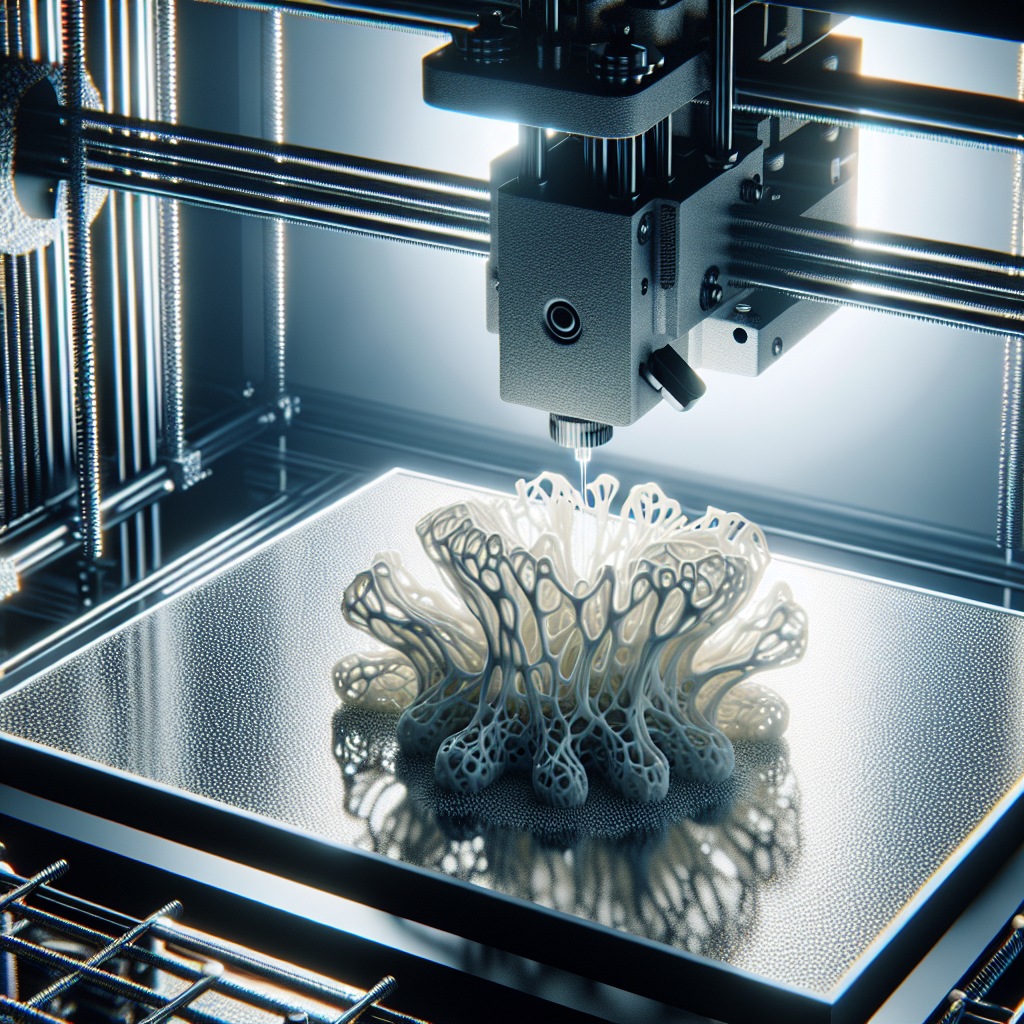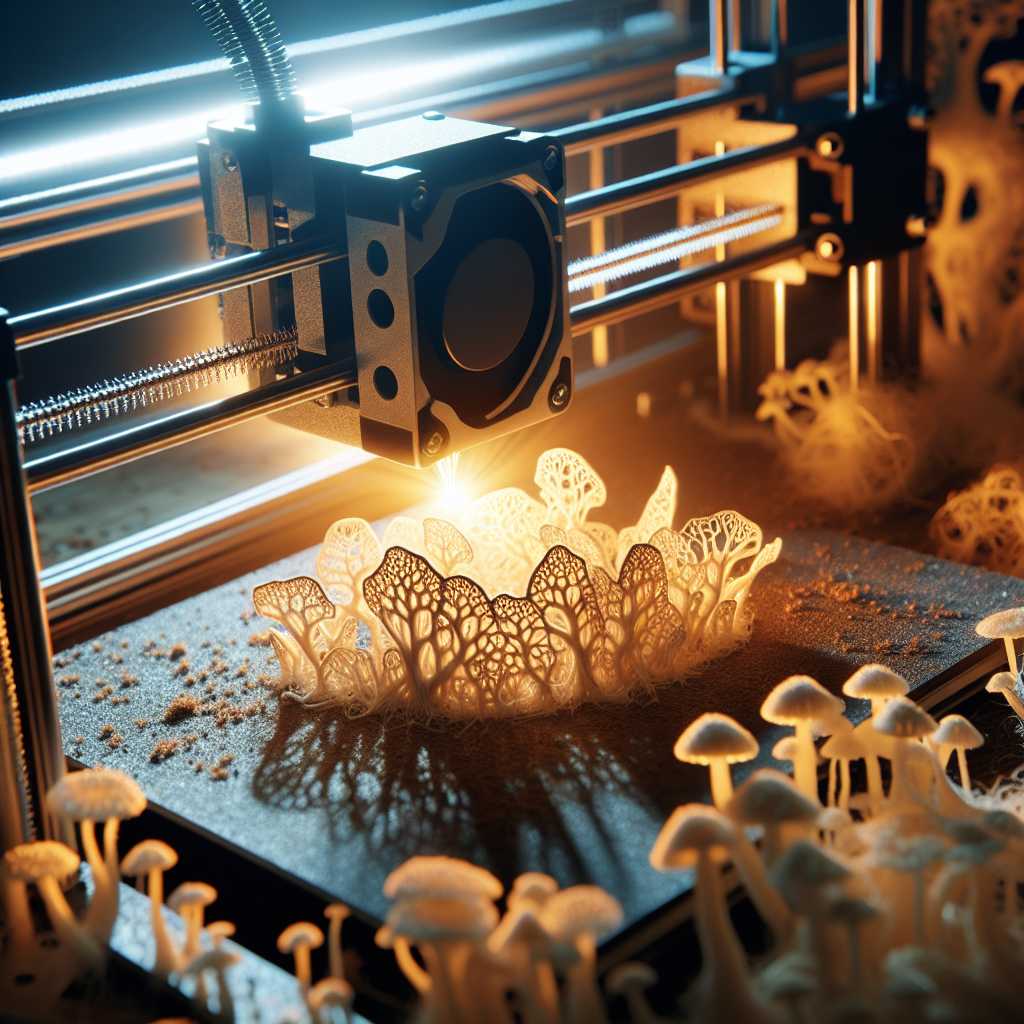In the realm of rapid technological advancement, “Exploring the Possibilities of 3D Print Mycelium Technology” offers a unique perspective on how this evolving technology has the potential to revolutionize various sectors of the global economy. You will explore the astounding potentialities inherent in 3D print mycelium technology, a domain which at first glance might seem esoteric, but is in fact significantly shaping the future. This article blends deep understanding and thorough research to explain this influential technology, addressing its essence, potentialities, and the broad impacts it could have on your world.

Understanding 3D Printing
3D printing, also known as additive manufacturing, is a cutting-edge technology that allows you to create physical objects from digital models. It has revolutionized the way we conceive and produce objects, bridging the gap between theory and reality in unprecedented ways.
Basic Concepts of 3D Printing
At the core of 3D printing is the basic concept of adding or depositing layers of material onto each other until a complete object is formed. This process starts with a digital design created or redesigned in a 3D modeling program. Throughout the printing process, the printer reads this file and lays down successive layers of material to build the model from a series of cross sections.
Different Types of 3D Printing Processes
There are several different types of 3D printing processes, each with its strengths and weaknesses. Fused deposition modeling (FDM) is the most commonly used method, whereby filament is heated and extruded through a nozzle to build layers. Stereolithography (SLA) uses light-reactive resin and a UV laser to create remarkably detailed objects. Selective laser sintering (SLS), on the other hand, uses a high-power laser to fuse small particles of ceramic, plastic, or glass.
Material Choices in 3D Printing
The choice of material in 3D printing can greatly influence the properties, applications, and quality of the final product. Choices include plastics like acrylonitrile butadiene styrene (ABS), nylon, or resin, as well as metals, ceramics, and even biological materials. Innovations in material science are continually expanding the possibilities of 3D printing.
Introduction to Mycelium
On the frontier of renewable materials is mycelium, the vegetative part of a fungus. This organic material promises significant benefits for various industries, as its inherent properties make it a uniquely versatile material.
What is Mycelium?
Mycelium is the root structure of fungi responsible for nutrient absorption. These tiny, interwoven filaments have innate cohesive properties, capable of binding substrates into a resistant, lightweight, and flexible material.
Biological Properties of Mycelium
Mycelium’s biological structure makes it an ideal candidate for biomaterial applications. It’s naturally hygroscopic, capable of absorbing and retaining water, and resistant to decay. Furthermore, it is biodegradable and therefore environmentally friendly.
Ecological Impact of Mycelium
Mycelium provides significant ecological benefits. It’s renewable, biodegradable, and requires relatively low energy for cultivation. In view of increasing environmental concerns, the sustainability of mycelium sets it apart from conventional synthetic materials.
Mycelium as a Raw Material
The application of mycelium as a raw material transcends fields, from fashion and construction to packaging and manufacturing.
Mycelium in Biomaterials
Mycelium-based biomaterials offer a mixture of benefits, from malleability and strength to cost-effectiveness. It’s utilised in creating sustainable alternatives to foam, leather, and even plastic. With the right conditions, mycelium can grow into virtually any shape, which is integral to manufacturing products of varying designs and functionalities.
Advantages of Mycelium over Traditional Materials
Mycelium offers numerous advantages over traditional materials. It’s renewable, lightweight, and requires relatively little energy to grow. Moreover, its ability to grow into any shape and size, coupled with its resistance to decay, makes it suited for a variety of applications.
Harvesting and Preparation of Mycelium for Use
Cultivating mycelium involves growing it on agricultural waste under controlled environmental conditions. Once full-grown, the mycelium-bound material is heat-treated to kill the fungus, ensuring it won’t grow in the future. Subsequent preparation depends on specific applications, but generally involves drying, traditionally or lyophilisation, and then shaping or molding into the desired form.

Merging Mycelium and 3D Printing
Combining mycelium technology with 3D printing brings together the best of biofabrication and additive manufacturing, paving a new path for sustainable production.
Concept of 3D Print Mycelium Technology
3D mycelium printing involves using live mycelium as a printable bio-ink. This novel material exploits mycelium’s natural properties like fast growth and architectural flexibility. With precise deposition, 3D printers can create complex structures that, after growth, result in robust biological constructs.
Role of Biotechnology in Developing this Concept
Biotechnology plays a critical role in leveraging mycelium for 3D printing. Techniques like genetic modification and optimization of growth conditions are necessary to maximize the material’s potential. This interdisciplinary collaboration between biology and technology is pushing the boundaries of manufacture possibilities.
Initial Experiments and Results
Initial experiments in 3D mycelium printing have shown promising results. Structures with variable density and complex architecture have been successfully constructed. However, this technology is still in its early stages, and more research is needed before it becomes commercially viable.
Technological Requirements for 3D Print Mycelium
The intersection of biological materials and 3D printing technology requires specialized equipment and software modifications.
Specialized Printers for Biological Material
3D printing with biological materials like mycelium requires printers with specific properties and modifications. These include temperature control features, specialized extrusion mechanisms, and increased sterilization methods to maintain the biological integrity of the material.
Software Modifications for Biomaterial 3D Printing
Software adjustments are necessary for printing with biomaterials. Changes may include adjustments to layer height, speed, and temperature settings to optimize the printing process and maintain the viability of biological materials.
Quality Control and Monitoring During the Print Process
Given the complexity of this process, quality control and monitoring become critical. Various parameters, such as cell viability, density, and growth rate, must be monitored closely to ensure the successful creation of structures.
Rapid Prototyping with 3D Printed Mycelium
A significant advantage of 3D printing technology is its ability to prototype quickly and efficiently. Applying this to mycelium-based materials brings this advantage to biomaterial development.
Use of 3D Printed Mycelium in Concept Modeling
Mycelium’s flexibility and adaptability make it an excellent medium for concept modeling. Engineers can prototype ideas quickly and efficiently, iterating designs with minimal material waste and costs.
Real World Examples of Mycelium Prototypes
Several real-world examples of mycelium prototypes have already been developed. Projects range from furniture and insulation panels to fashion items and even architectural models, showcasing the various applications of this technology.
Evaluation of Mycelium Prototypes
The evaluation of mycelium prototypes assesses their performance based on several parameters like durability, moisture resistance, and strength. Further, environmental impact, including biodegradability and resource-efficiency, are key in measuring their potential for sustainable production.
Commercial Applications of 3D Print Mycelium Technology
In recent years, 3D printed mycelium has shown great potential for commercial applications in various sectors.
Opportunities in the Manufacturing Sector
The manufacturing sector stands to gain from this breakthrough through the application of 3D-printed mycelium products. Example applications include packaging, insulation, fashion items, and industrial components.
3D Printed Mycelium in the Fashion Industry
The fashion industry is embracing mycelium 3D printing to create bio-leather products. By using it to design clothing or accessories, industry professionals are reconstructing fashion through ecological consciousness.
Mycelium in Architecture and Construction
In architecture and construction, 3D printed mycelium holds the ability to shape buildings or construction components. Its flexibility, durability, and sustainability align with the industry’s growing focus on green construction.
Environmental Impact of 3D Print Mycelium Technology
The environmental implications of this technology are profound due to the sustainable nature of mycelium.
Mycelium as a Sustainable Material
Mycelium is a sustainable material since it’s rapidly renewable and biodegradable. Additionally, its cultivation process is less resource-intensive than many conventional materials, making it an environmentally friendly choice.
Reduction of Plastic Waste Through Mycelium Use
The use of mycelium could help to reduce plastic waste. By replacing synthetic materials with biodegradable alternatives, it is possible to reduce the environmental impact of several industries.
Energy Consumption in 3D Print Mycelium Processes
While the energy consumption in 3D printed mycelium processes is expected to be higher than conventional 3D printing given the need for temperature control and sterilization, this is offset by the low energy required in mycelium cultivation.
Challenges and Limitations of 3D Print Mycelium Technology
While 3D printed mycelium holds great promise, several challenges must be addressed.
Technical Difficulties in Implementing the Technology
Technically, 3D printing with mycelium presents considerable challenges. These include but are not limited to cultivation variables, maintaining biological integrity during printing, and post-print growth control.
Legal and Regulatory Constraints
Legal and regulatory constraints also pose a challenge. Regulatory bodies must determine protocols and safety measures for the use and disposal of biological materials like mycelium in commercial applications.
Consumer Acceptance and Market Readiness
Market readiness and acceptance by consumers are crucial for successful market penetration. It is essential to educate and raise awareness about the benefits of this technology amongst potential users.
Future Scope of 3D Print Mycelium
Despite challenges, the future of 3D printed mycelium looks promising and opens up new avenues for material technology.
Potential Advancements in Mycelium 3D Printing
Technological advancements will maximize the potential of 3D printed mycelium. Developments in biotechnology, 3D-printing technology, and material science will undoubtedly enhance both the process and the product.
Upcoming Research and Developments
3D printed mycelium technology warrants large-scale, interdisciplinary research. The exploration of different fungi species, growth conditions, genetic modification, and printing parameters can further optimize the technology.
Long Term Impacts and Possibilities
In the long run, mycelium 3D printing technology has the potential to transform the way we build and produce items in a sustainable manner. From fashion to architecture, it could offer a novel and green approach in numerous sectors of our world. Mycelium’s sustainability combined with 3D printing’s versatility can result in new, efficient, and eco-friendly production methods.
3D Print Mycelium Technology demonstrates the vibrant future of biofabrication and additive manufacturing. While there are several challenges to address before it can be applied extensively, the environmental and material benefits of mycelium make the journey worthwhile. In the innovative and sustainable world of production, mycelium holds a significant place. As research and development progress, the fusion of 3D printing and mycelium is set to change industries and the way we perceive material use and sustainability.
